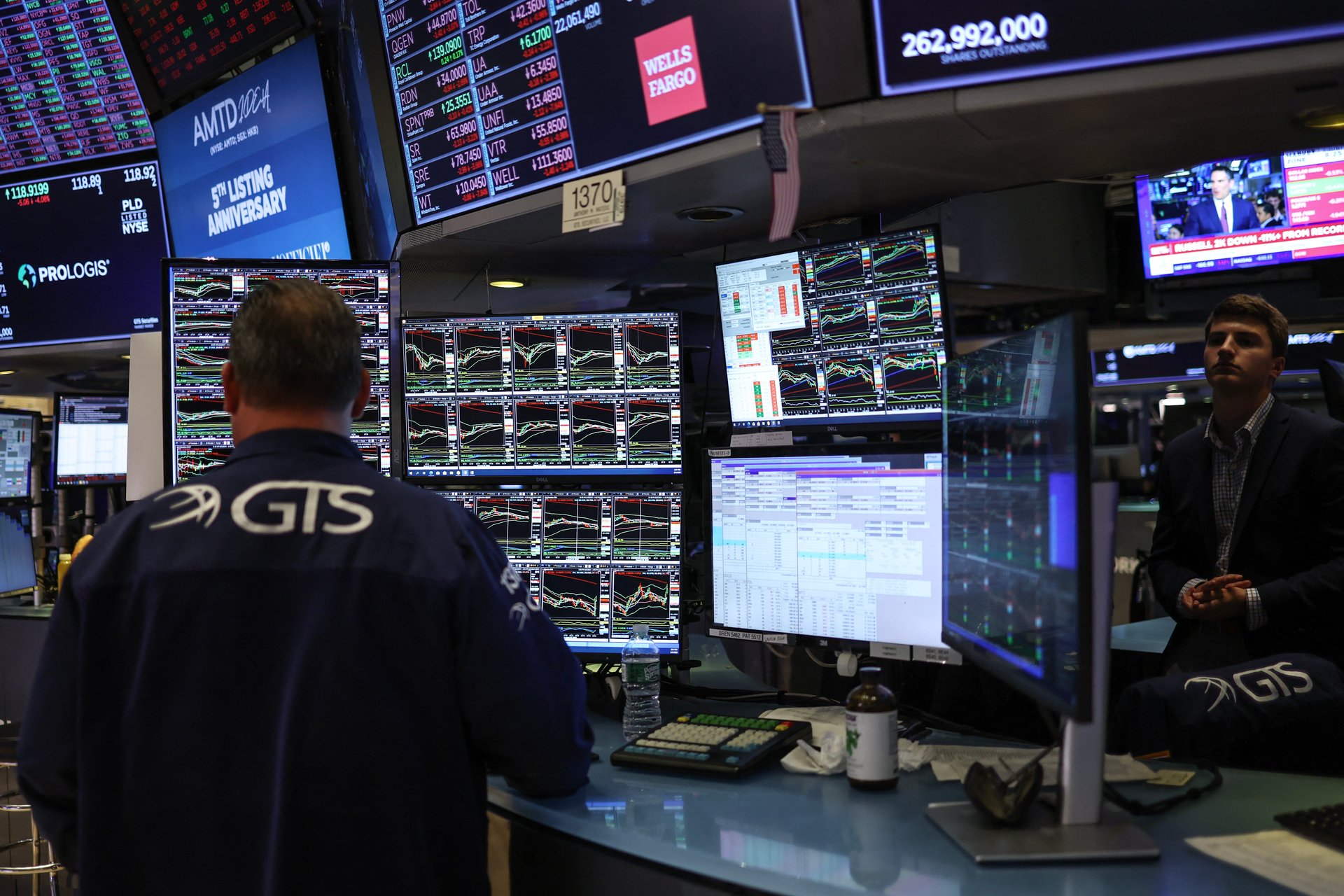The Dow is up 200 points as the market rally continues
Stocks are continuing to rebound after Monday's global market chaos

Global stocks are extending their recovery after Monday’s sell-off caused panic about the market and the health of the U.S. economy.
Suggested Reading
The Dow Jones Industrial Average was up 194 points, or 0.5%, at market open on Wednesday; the S&P 500 rose 1.14%; and Nasdaq 100 climbed 1..67%. The indices closed out strong on Tuesday, with the S&P 500 and the Nasdaq inching up about 1%, and the Dow adding around 300 points.
Related Content
This upswing follows on the heels of a massive sell-off Monday, set off by both a weaker-than-expected U.S. jobs report and the Bank of Japan’s decision to raise its benchmark interest rate, causing the value of the yen to rise. A higher yen sparked concerns about the unwinding of “carry trades,” wherein investors borrow with a currency at a low interest rate, like the yen, and use it to buy higher-returning investments.
In just two days, however, the market is on track to erase much of the losses from the three-day stock rout. On Monday, the Dow dropped 1,000 points and the Nasdaq lost almost 600 points. Japanese stocks also suffered their biggest drop-off since 1987.
Japan’s Nikkei 225 also closed up more than 10% on Tuesday — for its best day since October 2008 — and ended Wednesday up a little over 1%.
Still, there are concerns about the longer-term effects of the market chaos, including a flight from riskier assets, like stocks, amid rising fears about an economic downturn in the U.S.
A major concern among investors is that the sell-off becomes a “self-fulfilling prophecy,” where CEOs cut back on investments and consumers pull back on spending out of fear of a recession and spur a downturn, researchers at Morningstar DBRS wrote in a note Tuesday.
Yiming Ma, associate professor in the finance division at Columbia Business School, said volatility in the markets is just an adjustment — something that has been long overdue as stocks have been humming along for the past two years.
Over the coming months, it will be worth it to watch consumer spending, corporate earnings, and upcoming jobs reports, to really be able to determine where the economy is headed, she said.
